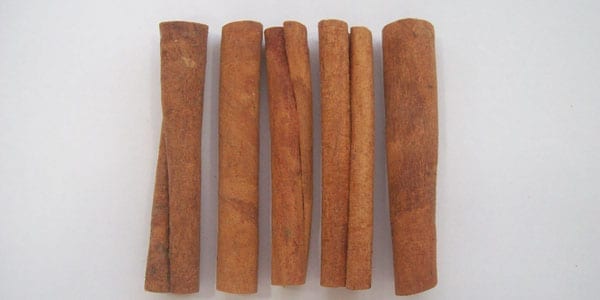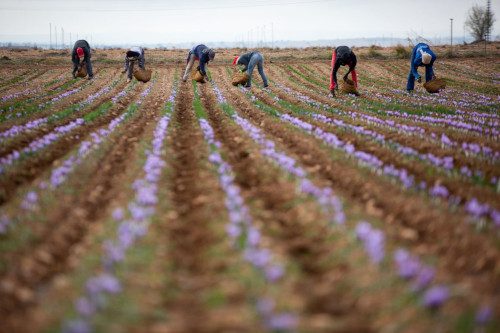
La cinnamon It is one of the spices best known for its pleasant woody aroma and its characteristic sweet taste. All cinnamon comes from the dried bark of different varieties of trees and shrubs of the genus cinnamomum. It belongs to the botanical family Lauraceae.
There is a great variety of cinnamon from different countries and different varieties of that tree. The process of obtaining is similar everywhere. The final product is similar, difficult to distinguish to non-expert eyes and palates.
Main classes of cinnamon
• “Cinnamomum zeylanicum” - It comes mainly from Sri Lanka (ancient Ceylon) and in many places it is recognized as the true cinnamon. Its color is paler and its aroma softer than the others. There are the types Sri Lanka, Seychelles and Madagascar, according to your production area.
• “Cinnamomum cassia” - Known as cassia or chinese cinnamon. It comes from different areas of China and it has a more reddish color and a more penetrating aroma, although it is less sweet.
• “Cinnamomum burmanii” - From Indonesia or Korintje, where it grows mainly in the Padang island.
• “Cinnamomum loureirii” - Also known as Cassia from Saigon. It comes mainly from Vietnam.
• “Cinnamomum tamala” - From the India o cassia india.
Cinnamon stick
En general, cinnamon stick is marketed in the form of cigars or eclairs cut to different sizes. In this case, its quality is measured by the thickness of the cigar or tube, the thinner its thickness, the better quality. When ground to produce ground cinnamon it is much more difficult to distinguish the variety.
It is even common to mix different types of cinnamon on branch to produce ground cinnamon with different attributes. This according to the market to which they are directed.
El tree of this spice, known as 'canelo', grows in tropical maritime climates. Low on sandy, well-drained and humid terrain. It can be multiplied by germinated seeds indoors for about three weeks.
Also by means of semi-mature cuttings in summer. For its growth it requires enough sun and temperatures that do not drop below 15ºC, with abundant rainfall. Although it can reach Meters 10 in its wild form, it is generally pruned on trees smaller than a few 2 meters. This facilitates its cultivation and causes it to develop a greater number of branches where to get the cinnamon. But here in Spain what it has developed has been a curious expression that refers to its unquestionable quality. Or don't you know the saying "that's cinnamon on branch"?
Places of provenance
In general, all kinds of cinnamon are grown in the South of Asia and in tropical countries. Sri Lanka is considered the largest producer of cinnamon, followed by China and Indonesia.
The first harvest of the cinnamon tree is made from the sixth year of its plantation. In general, it is collected every two years during the rainy seasons. In Sri Lanka this occurs between May and June, and between October and November. Meanwhile in China it is harvested in March and April. In Indonesia throughout the year.
Its elaboration
The branches are cut at the base, they are debarked and the bark is left to dry in the shade for a day or two. The outer part of the bark is then removed. When drying, the inner part of the bark rolls up on itself.
When it's still wet, the thinner pieces are introduced into the thicker ones and rolled by hand, forming the typical cinnamon sticks or cigars. Once dry, the whole is strongly interwoven and becomes dark, fine and brittle color. Later they are cut to the desired size.
You also get pieces of the bark internal through peeling or scraping of young shoots. Also directly the pieces of the crust without scraping. All kinds of cinnamon sticks they can be ground to obtain a reddish-brown ground with its typical aroma.
El cinnamon flavor is defined as aromatic, slightly sweet, fragrant and warm. The smell of wood that it gives off is very pleasant, delicate and intense. The cassia it has a more intense aroma and its flavor is less sweet. But be that as it may, we are talking about a sweet spice that fits perfectly with many pastry preparations. In which dishes or recipes do you usually like it the most?






